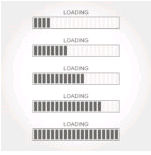
The Board recently granted a motion to amend, to replace unpatentable claims with proposed substitute claims, a rare occurrence that may signal a change compelled by Aqua Products (summarized here). In Apple, Inc. v. Realtime Data, LLC, Case No. IPR2016-01737 (PTAB March 13, 2018), the Board determined that all challenged claims were unpatentable and then granted the patent owner's contingent motion to amend with respect to all proposed substitute claims. Based on a USPTO study on motions to amend (see Graph III here), only four motions to amend substituting claims were granted in full before September 30, 2017, mere days before the Federal Circuit issued its en banc decision in Aqua Products.
The patent challenged in Realtime Data is directed to providing accelerated loading of operating system and application programs upon system boot or application launch, and the use of data compression and decompression techniques for such purpose. The Board determined that all of the challenged claims were unpatentable under 35 U.S.C. §103(a), as obvious over four different sets of prior art references. Turning to the motion to amend, the Board noted that, in light of Aqua Products, it must assess the patentability of proposed substitute claims without placing the burden of persuasion on the patent owner. The Board determined that the patent owner satisfied its burden with respect to the requirements of 37 C.F.R. § 42.121, under which the patent owner must demonstrate (1) the amendment responds to a ground of unpatentability involved in the trial; (2) the amendment does not seek to enlarge the scope of the claims of the patent or introduce new subject matter; (3) the amendment proposes a reasonable number of substitute claims; and (4) the proposed claims are supported in the original disclosure. The Board then determined that the petitioner failed to establish that the substitute claims are obvious over ten different sets of prior art references.
The patent owner's success in Realtime Data indicates that its substitute claim strategy may be a worthwhile template for future patent owners in IPRs. This strategy includes three key parts.
- First, the Realtime Data patent owner proposed the same number of substitute claims as there were challenged claims. Under 37 C.F.R. §42.121(3), the presumption is that only one substitute claim is needed to replace each challenged claim. This presumption can be rebutted by a demonstration of need, but the patent owner in Realtime Data did not need to address the presumption because it submitted no more substitute claims than challenged.
- Second, the Realtime Data patent owner narrowed only the independent claims and did not add new limitations to the dependent claims. This strategy practically narrows the Board's review to just the independent claims. Under this strategy, if the challenged dependent claims are found to be unpatentable, the substitute dependent claims will not provide any new patentable material barring some reason that a person of skill in the art would not have combined the art cited against the challenged dependent claims with the new limitations recited in the substitute independent claims. In Realtime Data, the Board may have appreciated that the patent owner streamlined its review, which may have helped the patent owner walk away with fifty-five substitute claims.
- Third, the Realtime Data patent owner added only the same limitations to each independent claim, to the extent possible. The patent owner added the same four limitations to all three independent claims, and the only other change was that the patent owner identified the "first memory" as a "first volatile memory" in one of the claims. Again, this streamlines the Board's work by requiring the Board to only think about prior art with respect to only one set of new features.
After Aqua Products, the burden of persuasion is not on the patent owner. Petitioners should therefore be more aware than ever of the need to provide evidence, not just statements, to articulate a reason why a person of ordinary skill in the art would combine prior art references. In Realtime Data, the patent owner provided evidence that DRAM was, on a per-megabyte basis, more expensive than flash or at least equally expensive. The Board found this evidence undercut the petitioner's reason to modify one prior art reference with another, and the petitioner had not provided any evidence to the contrary. Even a statement by a declarant, according to the Board, would be inadequate to demonstrate a rationale for why a person of ordinary skill in the art would combine the teachings from prior art references if the statement were merely conclusory.
The content of this article is intended to provide a general guide to the subject matter. Specialist advice should be sought about your specific circumstances.

